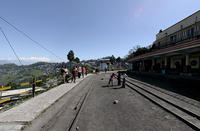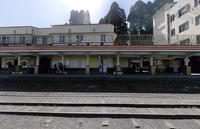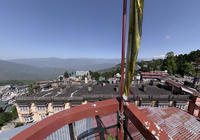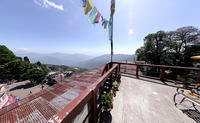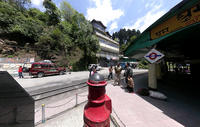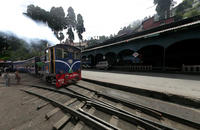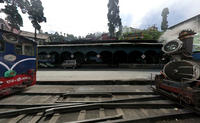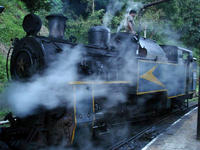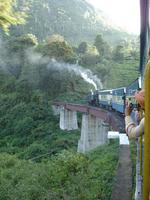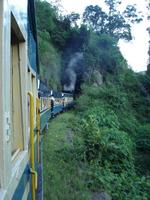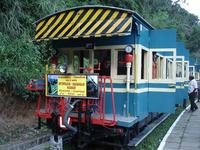You are in: Asia -> India -> Mountain Railways of... , and traditional search or Image Gallery will yield results of this site only
Mountain Railways of India
| Site number: | 944 |
|
| Type of site: | Cultural | |
| Date: | 1881;1891-1908 | |
| Date of Inscription: | 1999 | |
| Location: | Asia, India, States of West Bengal and Tamil Nadu | |
Up to 75 images are shown here. Click on each for more details or on Image Gallery for more images.
| Description: | Mountain Railways of India are passenger railways that have been crossing regions of great beauty for a century and are still operational today. They constitute excellent examples of daring, ingenious engineering solutions for the problematic establishment of an effective rail link through a rugged, mountainous landscape. The Darjeeling Himalayan Railway was launch in 1881, whereas the Nilgiri Mountain Railway (although planned in 1854) was constructed between the years 1891-1908, taking longer due to the obstacles of the mountainous placement which scales an altitude of 326m to 2,203m. The railways were momentous in facilitating population movement and the social-economic development during the British colonial era. --WHMNet paraphrase from the description at WHC Site, where additional information is available. For 360 degree imaging of this site, click here. | |
| Several railways were built in the mountainous regions of India. Collectively they are known as the Mountain railways of India. Four of these railways are running in 2007: Darjeeling Himalayan Railway, Nilgiri Mountain Railway, Kalka-Shimla Railway, Matheran Hill Railway. The collective designation refers to the current project by the Indian government to nominate a representative example of its historic railways to UNESCO as a World Heritage Site. The Darjeeling Himalayan Railway was recognized in 1999, while the Nilgiri Mountain Railway was added as an extension to the site in 2005. They were recognized for being outstanding examples of bold, ingenious engineering solutions for the problem of establishing an effective rail link through a rugged, mountainous terrain. --Wikipedia. Text is available under the Creative Commons Attribution-ShareAlike License. For 360 degree imaging of this site, click here. | ||
| Source: | http://whc.unesco.org/en/list/944 | |
| Source2: | http://whc.unesco.org/en/list/944/video | |
| Reference: | 1. UNESCO World Heritage Center, Site Page. | |


